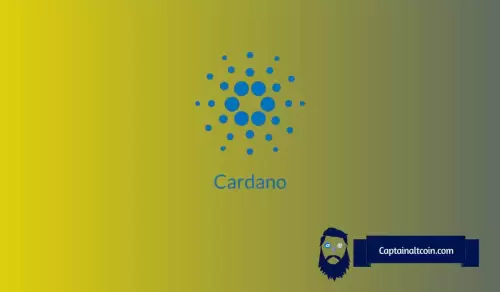 |
|
 |
|
 |
|
 |
|
 |
|
 |
|
 |
|
 |
|
 |
|
 |
|
 |
|
 |
|
 |
|
 |
|
 |
|

A fresh batch of macroeconomic data from the U.S. has just landed, and it’s painting a rather discouraging picture.
If you’re still defending this administration, you’re either a grifter or a victim of a cult. Which one are you?
Jobs Down. GDP Down. Consumption Down. Inflation Up. Time for some serious thinking.
We’ll start with the Q1 GDP — the U.S. economy contracted by 0.3% year-over-year in the first quarter of this year, marking the first decline since 2022. A major contributor to this downturn was a sharp 51% increase in imports, as businesses likely rushed to bring in goods ahead of expected tariff hikes and at lower costs. However, keep in mind that this table does not include import data, which clearly affected the GDP reading. It provides additional insight into what happened with the U.S. GDP.
Moreover, the J.P. Morgan economists, who had previously estimated the probability of a recession at 60% in mid-April, recently adjusted their projection to 74% peak on Kalshi before settling closer to 60%. This adjustment follows the Q1 2024 GDP figures, which came in worse than anticipated. Economists had anticipated a 0.3% quarter-over-quarter increase in PCE but instead recorded a 0.3% decrease. This unexpected turn of events now places the Federal Reserve in an extremely complicated predicament.
The situation is further complicated by the rise in the Personal Consumption Expenditures (PCE) price index to 3.5%. This exceeded the forecast of 3.1% and was significantly higher than last month’s reading of 2.6%.
When the PCE index rises, it means that the prices of goods and services are also increasing, which in essence is inflation. If inflation increases faster than economic growth, this can lead to instability, which would normally prompt the central bank to raise interest rates to fight inflation. But that only applies if the economy is growing — and here, the economy is shrinking, so the Federal Reserve will most likely reject the Trump administration’s call to cut rates.
If rates are cut, inflation will likely rise further, especially if the current tariff regime remains unchanged. That places the U.S. economy in a genuine deadlock. The economy is slowing down at precisely the moment when inflation expectations are growing — a deeply troubling signal.
Consumers in the U.S. are also highly concerned, as evidenced by the Consumer Confidence Index, which has dropped to a record low.
As for the latest employment data, this comes from the ADP labor market report.
The U.S. economy added just 62,000 jobs in April — the lowest number since July 2024. This is well below the 147,000 jobs added in March. Once again, expectations diverged sharply from reality.
Thus, the Federal Reserve faces an extremely difficult choice: to keep inflation in check or to prevent rising unemployment. If it maintains high interest rates, GDP could weaken further in the future, eventually leading to higher unemployment. On the other hand, if it cuts rates too soon, there is a strong chance that inflation will accelerate again. All of this puts the U.S. Fed in a very tough spot, forcing it to decide which economic risk takes priority.
Let’s also examine the Consumer Confidence Index — an important indicator that offers valuable clues about what may lie ahead.
Consumer confidence has been declining for five straight months, and April was no exception, clearly signaling mounting economic anxiety. The Consumer Confidence Index fell by eight points to 86, the lowest level since May 2022. Even more concerning is that the drop was broad-based, affecting all age groups and most income levels.
More alarming still is the Expectations Index, which reflects consumer outlooks for the next six months. It plunged by 13 points to 54 — the lowest reading since October 2011. A reading below 80 typically signals a potential recession, and today’s 54-point reading is far beneath that threshold.
Overall, Americans are now expressing one of the bleakest economic outlooks in over a decade. J.P. Morgan now expects a recession within the year. Nonetheless, even after all this data, markets are still hopeful that the U.S. will begin cutting rates in June, with at least four rate cuts expected this year.
In other words, the market is largely betting that the U.S. will choose the economy over the inflation fight — but uncertainty around this projection is growing, as the Fed faces simultaneous pressures from both rising prices and weakening employment.
In an environment of growing economic uncertainty and market volatility, investors and traders increasingly rely on trusted sources of analysis and support. This is especially relevant as capital gradually shifts from assets
免责声明:info@kdj.com
所提供的信息并非交易建议。根据本文提供的信息进行的任何投资,kdj.com不承担任何责任。加密货币具有高波动性,强烈建议您深入研究后,谨慎投资!
如您认为本网站上使用的内容侵犯了您的版权,请立即联系我们(info@kdj.com),我们将及时删除。
-

- 比特币披萨日是最具标志性,最轻松的假期之一
- 2025-06-02 00:10:16
- 比特币披萨日是加密货币社区中最具标志性,最轻松的假期之一,标志着数字货币历史上的关键时刻。
-

- 比特币的每周蜡烛在$ 105,000以上关闭
- 2025-06-02 00:10:16
- 比特币的每周蜡烛在历史上首次关闭了105,000美元以上,这只会使新的头发成为新的历史最高水平(ATH)。
-

-

-

-

- 产生经验丰富的创业创始人的顶级大学
- 2025-06-02 00:01:00
- 这些再次是我们一年一度的研究结果,美国大学和大学毕业了资金最多的创业者数量
-

- XRP今天的价格下跌低于$ 2.45,因为熊恢复控制
- 2025-06-01 23:55:12
- 在五月中期集会的波动性将XRP价格发送到2.68美元之后,该资产现在正急剧朝着关键支持区域回溯。
-

- Ripple vs SEC Battle可能会在今年结束
- 2025-06-01 23:55:12
- 随着和解谈判和本周的一次关键SEC会议,对于XRP而言,赌注比以往任何时候都要高。这是对事物立场的快速分解
-



























































